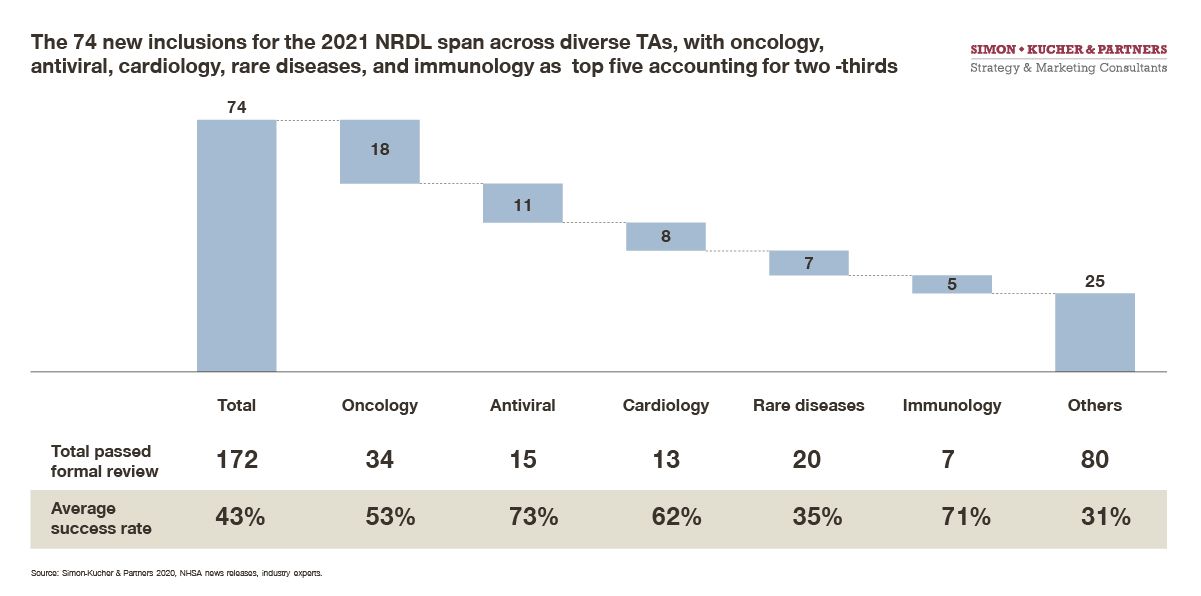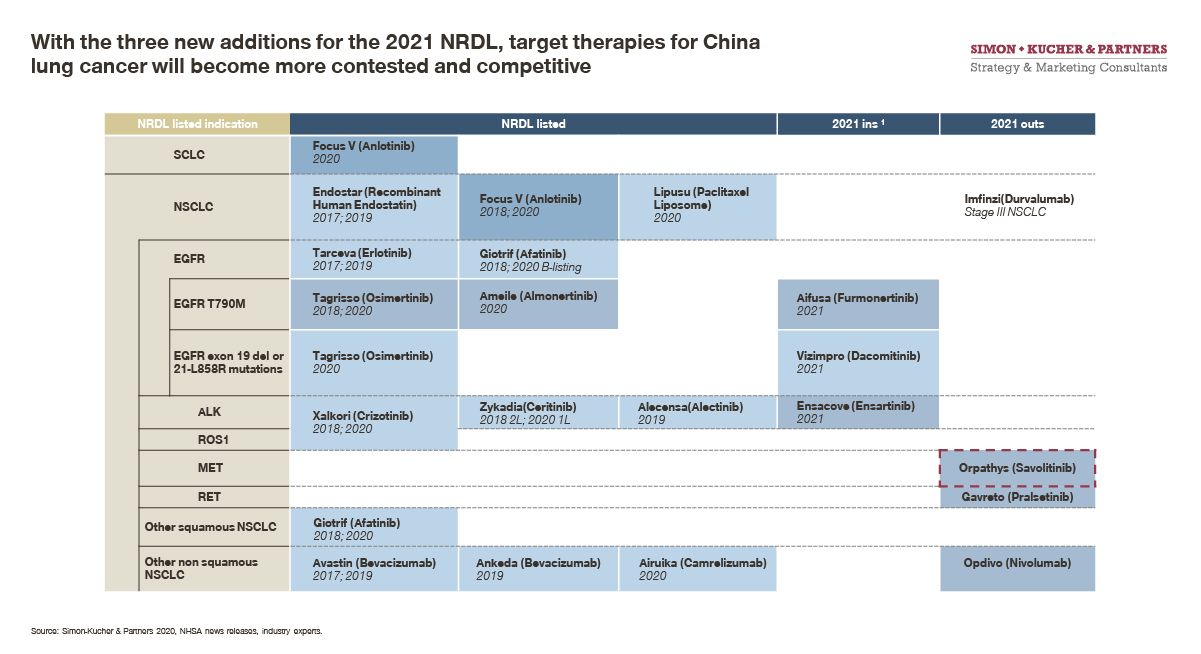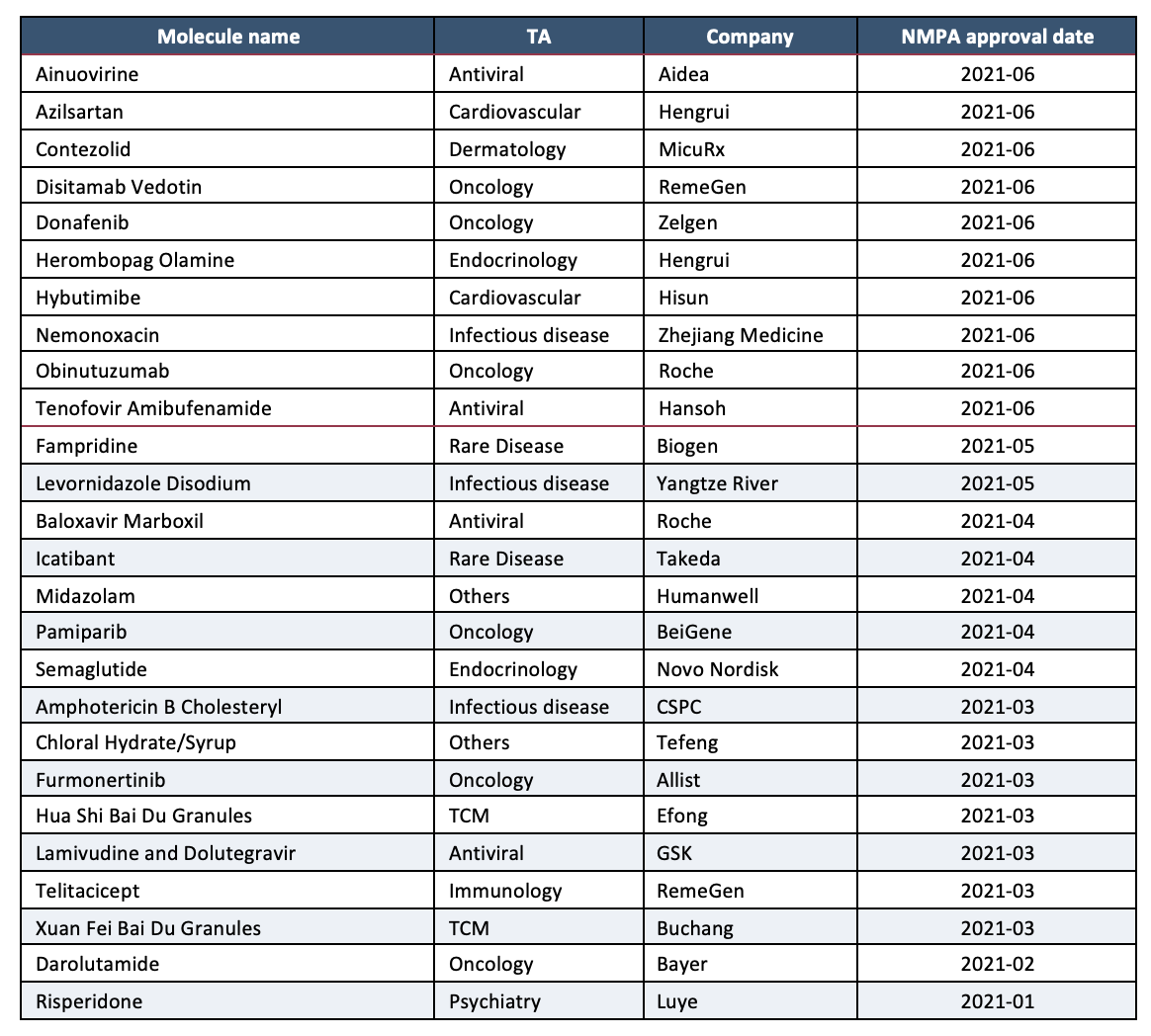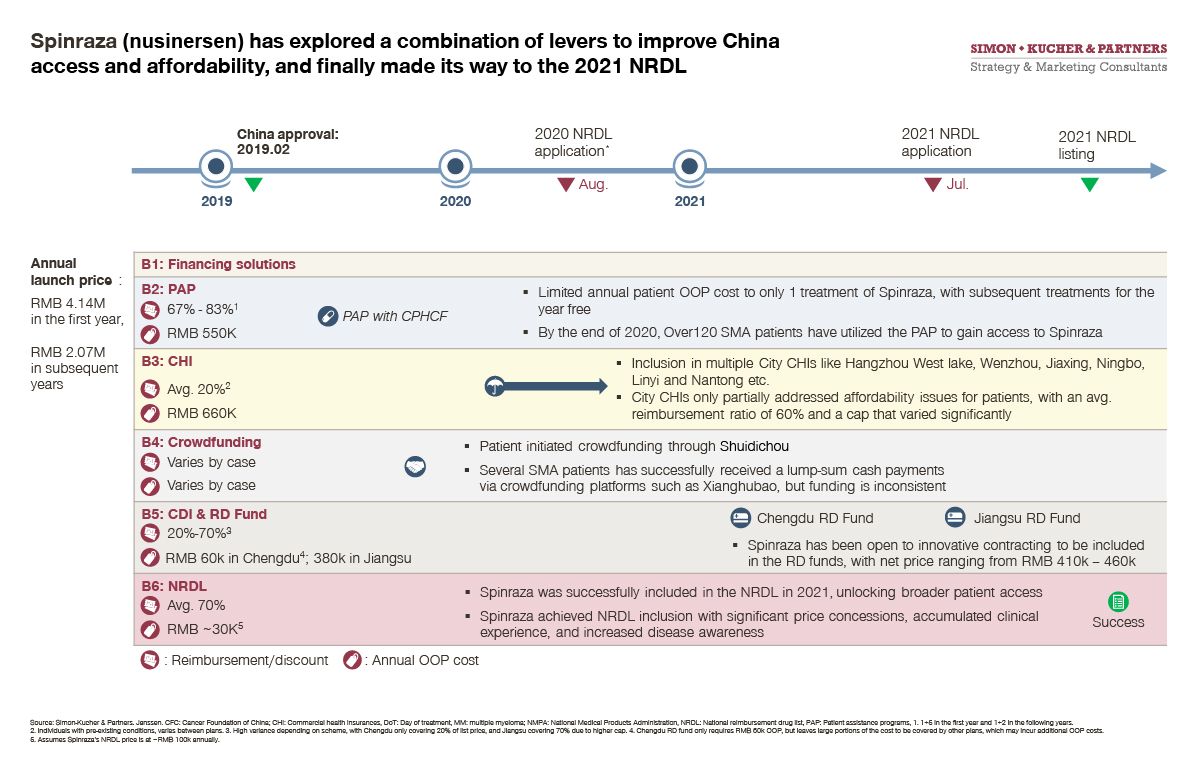- Sustainability
- DE&I
- Pandemic
- Finance
- Legal
- Technology
- Regulatory
- Global
- Pricing
- Strategy
- R&D/Clinical Trials
- Opinion
- Executive Roundtable
- Sales & Marketing
- Executive Profiles
- Leadership
- Market Access
- Patient Engagement
- Supply Chain
- Industry Trends
China 2021: The NRDL Readout
China‘s 2021 National Reimbursement Drug List (NRDL) results are finally out despite, a slight delay. In line with Simon-Kucher’s earlier predictions, this year features another major expansion of the NRDL formulary, with ongoing emphasis on innovations and some much anticipated breakthroughs in rare disease drug inclusions. As the dust settles, it is time for pharmaceutical companies to plan the year ahead, with inspirations and takeaways from this year’s results.
The 2021 NRDL represents another major expansion of the NRDL formulary
With 74 new additions made to the list, the 2021 NRDL new additions were second only to last year’s 119. The success rate for new inclusions through negotiations officially stood at 79 percent from the shortlist — the highest over the past three years.
Using a different denominator with the number of entries that passed the first round of formal review, the success rate would come to 43 percent. A figure considered by many to be a more realistic reflection and accurate representation of the competitive environment.
In fact, the competitive pressure also manifested itself in the average price cut magnitude this year, which stood at 62 percent – compared to 2020 and 2019 levels at 51 and 61 percent, respectively.
Click to enlarge.

Of the new additions, oncology stands out as the top therapeutic area (TA) to benefit. The 18 new drugs for oncology accounted for 24 percent of new additions, including:
Four for breast cancer
Three each for lung cancer and lymphomas
Two each for prostate, ovarian cancer, and multiple myeloma
One for gastric cancer
Lung cancer, for example, received three new additions, which span across ALK and EGFR subtypes. They will compete directly or indirectly with some of the 13 target therapies already included in the NRDL. As the space becomes more contested and competitive, key players will need to strive for future growth in the Chinese market and look for more dimensions for differentiation and innovation going forward.
Click to enlarge.

Besides oncology – antiviral, cardiology, rare diseases, and immunology were the top TAs, together they accounted for 66 percent of the new additions. Of these TAs, some are of particular interest, including:
Biktarvy and Vosevi from Gilead
The two PSCK9i from Amgen and Sanofi
Spinraza from Biogen and Replagal from Takeda
Stelara and Taltz from Janssen and Lilly, respectively
In particular, a Chinese biopharma, RemeGen, made its NRDL debut and scored two major wins with its SLE drug Telitacicept and gastric cancer ADC Disitamab Vedotin. The latter was out licensed to Seagen ex-Asia for 2.8 billion US dollars earlier this year, a record-breaking deal for China’s biopharma industry.
As a result of annual expansions over the past five years, the NRDL formulary now stands at 2,860 drugs — up from 2,588 in 2017.
The 2021 NRDL signals ongoing emphasis on innovations
Of the 74 new NRDL inclusions, 26 were newly approved in 2021, and 20 were approved in 2020. Together they amount to 62 percent of the new inclusions total.
For oncology new additions as an example, innovative therapies made the list with record speed, as the average time from launch to NRDL inclusion stands at 14 months in 2021, compared to 29 months last year. Of them, some stand out as truly innovative therapies that may shape China’s disease treatment paradigms and bring hope to many patients in need, including:
- Obinutuzumab, also known as Gazyva from Roche
- Abemaciclib, also known as Verzenio from Lilly
- Darolutamide, also known as Nebeqa form Bayer
- Surufatinib from HutchMed
- Fluzoparib and pamiparib from Hengrui and BeiGene respectively
These are among the ones stand to benefit most from the NRDL listing, which would help clear major market access hurdles in one fell swoop – as we noted in our Pharm Exec article last month, “China 2021 National Reimbursement Drug List Outlook.”
We will track their performances in the coming year, as some of them represent the fastest NRDL inclusion possible to date, and may benefit from disproportionate and exponential NRDL impacts from the fast inclusion.
Click to enlarge.

Remarkable breakthroughs were seen with rare diseases drugs
Seven rare disease drugs made it to this year’s NRDL, accounting for around 10 percent of the new inclusions. This signals increasing recognition of rare diseases as a priority for NRDL coverage.
More importantly, the average time taken from a China launch to a NRDL inclusion for the seven drugs averaged at 18 months — compared to the 2019 average of 87 months, a remarkable 80 percent reduction.
- Takeda’s Firazyr, an innovative drug for hereditary angioedema newly launched in China, was included in the NRDL seven months after its China approval
- Biogen’s Ampyra was just approved in China in May 2021, and wasted no time in getting into this year’s listing as a result of forward planning and effective engagements
Early inclusion into the NRDL not only helps improve affordability and overcome access challenges, but goes a long way toward improving China disease awareness, diagnosis, and treatment in the cases of rare diseases. This brings tremendous benefit for patients in need, and affords faster uptake across the vast Chinese market.
In addition, a number of high-price and high-profile drugs became the poster children of the 2021 NRDL, building on initial traction and earlier successes with various alternative access options Simon-Kucher mapped out in our recent Pharm Exec article on “Maximizing China Access for Innovative Therapies.”
Spinraza, in particular, was the first RNA therapy for spinal muscular atrophy (SMA) and probably the best known rare disease drug in China. Prior to its 2021 NRDL listing, it explored a combination of options to improve access and affordability for China patients, and took the initiative to shape the market working closely with different key stakeholders including:
- Patient advocacy groups
- Key opinion leaders at major hospitals
- Rare disease networks, such as the China Association of Rare Diseases
- Charities, commercial payers, and regional governments
All these efforts helped Spinraza with this year’s NRDL inclusion, which, in turn, will further help it better access Chinese patients in need.
Click to enlarge.

Key takeaways
To pharmaceutical majors, the 2021 NRDL brings about triumphs for many, disappointments to some, and high dramas and suspense for all.
As the dust finally settles, it is time for pharmaceutical companies to take time to refresh, reflect, and revisit their China access strategy as needed, and plan the year ahead with some inspirations and takeaways from this year’s results, hopefully.
About the authors
Bruce Liu leads Simon-Kucher’s Life Sciences division in Greater China. Tong Wang and Justinian Liu are senior consultants with years of experience in pharmaceutical pricing and access. Shiying He is a consultant with extensive experience in health economics and payer strategies. Duo Xu, Miranda Wang and Selene Peng are consultants with expertise on China pharma and healthcare industry, and recent experience with NRDL trends and outlook.
IMF Chief Medical Officer Discusses Global Initiatives to Improve Myeloma Treatment
August 20th 2024In an interview with Pharm Exec Associate Editor Don Tracy, Joseph Mikhael, chief medical officer, IMF, offers a glimpse at multiple initiatives that the IMF is working towards to improve myeloma treatment globally.
